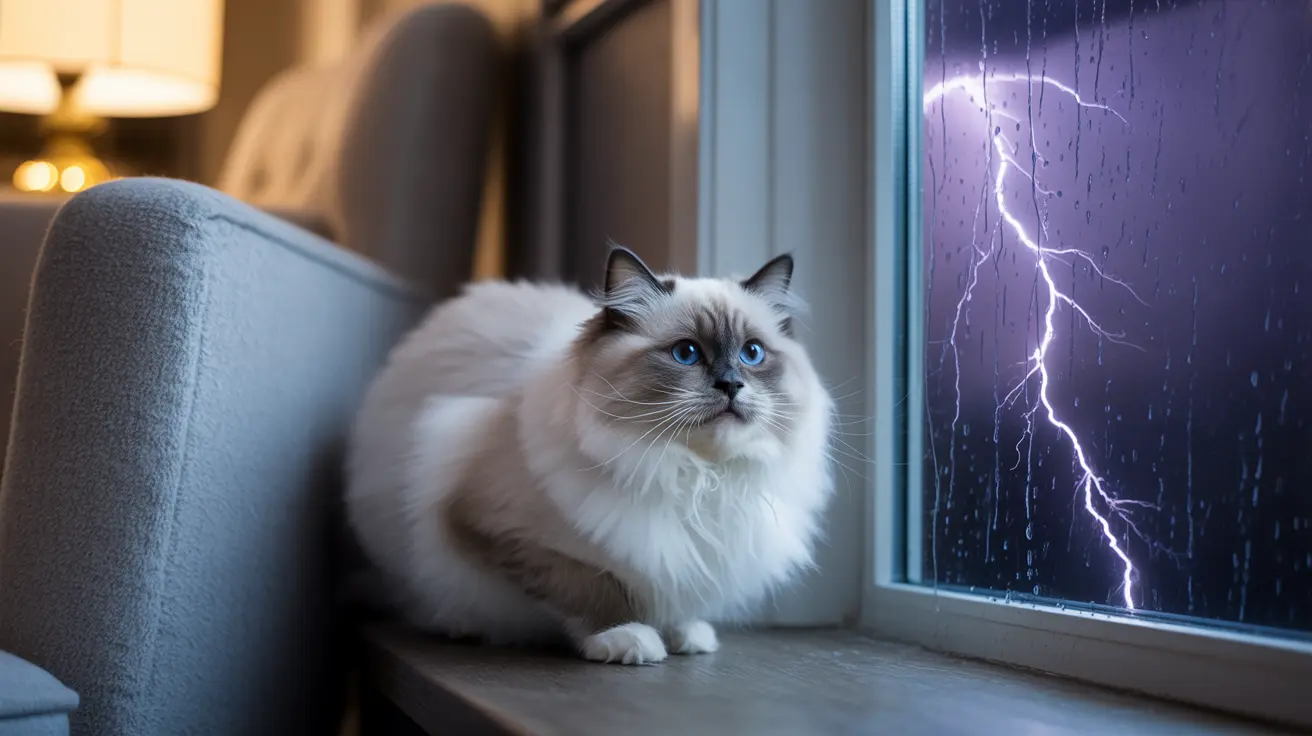If you've ever noticed your cat having an unexpected accident during a frightening situation, you're not alone. Cats pooping when scared is a natural physiological response tied to their fight-or-flight mechanism. This involuntary reaction, while distressing for both cat and owner, serves as a survival response rooted in feline biology and evolution.
Understanding why cats exhibit this behavior is crucial for pet owners, as it helps provide better support during stressful situations and ensures appropriate responses to these incidents. Let's explore the science behind this common occurrence and learn how to help our feline friends manage their fears more effectively.
The Science Behind Fear-Based Defecation
When cats experience sudden fear or intense stress, their bodies undergo an immediate physiological response. The sympathetic nervous system activates, triggering the release of stress hormones like adrenaline. This cascade of hormones causes several rapid changes in the body, including:
- Increased heart rate and blood pressure
- Muscle tension throughout the body
- Rapid contraction of digestive tract muscles
- Involuntary relaxation of sphincter muscles
These physical reactions can result in sudden, uncontrolled defecation, regardless of the cat's normal bathroom habits or proximity to their litter box.
Common Triggers That Cause Fear-Based Pooping
Environmental Stressors
- Loud noises (thunderstorms, fireworks, vacuum cleaners)
- Unfamiliar visitors or new pets
- Moving to a new home
- Changes in household arrangement
Direct Threats
- Aggressive encounters with other animals
- Unexpected handling or restraint
- Being cornered or trapped
- Veterinary visits
Recognizing Signs of Fear in Cats
Before defecation occurs, cats typically display several warning signs of fear:
- Dilated pupils and flattened ears
- Crouched body position
- Puffed-up fur (piloerection)
- Rapid breathing or panting
- Hiding or attempting to escape
- Hissing or growling
Prevention and Management Strategies
Creating a Safe Environment
Minimize the likelihood of fear-based defecation by establishing a secure, predictable environment:
- Provide multiple hiding spots and elevated perches
- Maintain consistent daily routines
- Create quiet spaces away from household activity
- Use pheromone diffusers to promote calm
Behavioral Training
Help your cat build confidence through positive experiences:
- Gradual desensitization to common triggers
- Reward-based training for stress management
- Regular playtime to reduce anxiety
- Scheduled feeding times for stability
When to Seek Veterinary Help
While occasional fear-based defecation is normal, consult a veterinarian if:
- The behavior becomes frequent
- There are other changes in elimination habits
- Your cat shows signs of physical distress
- The fear response seems excessive or unusual
Frequently Asked Questions
Why do cats involuntarily poop when they get scared?
Cats poop when scared due to the activation of their fight-or-flight response, which causes involuntary muscle contractions in their digestive system. This automatic reaction helps lighten their body for potential escape from danger.
What signs indicate my cat is scared and might poop out of fear?
Look for dilated pupils, flattened ears, puffed-up fur, crouching, hiding, or attempting to escape. These signs often precede fear-based elimination and indicate your cat is experiencing significant stress.
How can I help prevent my cat from pooping when frightened?
Create a calm environment with safe hiding spots, maintain consistent routines, and gradually desensitize your cat to common triggers. Using pheromone products and providing environmental enrichment can also help reduce stress levels.
When should I worry about my cat's fear-related pooping and see a vet?
Consult a veterinarian if the behavior becomes frequent, is accompanied by other elimination issues, or if your cat shows signs of excessive anxiety or physical distress. This helps rule out underlying medical conditions.
Are there common triggers that cause cats to poop due to fear or stress?
Common triggers include loud noises, unfamiliar visitors, new pets, changes in environment, veterinary visits, and aggressive encounters with other animals. Understanding these triggers helps in prevention and management.






